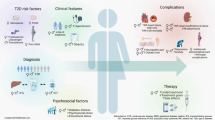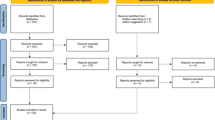Abstract
Purpose
To determine the association between tetrahydrocannabinol (THC) use and testosterone (T) levels among men in the United States.
Methods
Using the National Health and Nutrition Examination Survey (NHANES) data from the years 2011–2016, we identified all men 18 years and older who answered the substance use questionnaire and underwent laboratory testing for T. Regular THC users were defined as those who use THC at least one time per month, every month for at least 1 year. Multivariable linear regressions controlling for confounders were then used to determine the relationship between THC use and T levels.
Results
Among the 5146 men who met inclusion, 3027 endorsed using THC at least once in their life (ever-user). Nearly half of the THC ever-users (49.3%) were considered regular THC users. Multivariate analysis controlling for age, comorbidities, tobacco use, alcohol use, body mass index (BMI), exercise level, and race revealed a small but statistically significant increase in T among regular THC users at any measured level of use, compared to non-regular THC users (non-users). This increase was characterized by an inverse U-shaped trend with Regular THC users using two–three times per month demonstrating the greatest increase in T (+ 66.77 ng/dL) over non-users.
Conclusion
THC use is associated with small increases in testosterone. This increase in T appears to decline as THC use increases, but nevertheless, T is still higher with any amount of regular use when compared to T in non-users. Prospective work is needed to validate the observed increase and to better elucidate the mechanism of impact THC use has on T levels.

Similar content being viewed by others
References
Kerr WC, Lui C, Ye Y (2018) Trends and age, period and cohort effects for marijuana use prevalence in the 1984–2015 US National Alcohol Surveys. Addiction 113:473–481
Sharma P, Murthy P, Bharath MMS (2012) Chemistry, metabolism, and toxicology of cannabis: clinical implications. Iran J Psychiatr 7:149–156
Carliner H, Brown QL, Sarvet AL, Hasin DS (2017) Cannabis use, attitudes, and legal status in the US: A review. Prev Med 104:13–23
Cuttler C, Mischley LK, Sexton M (2016) Sex differences in cannabis use and effects: a cross-sectional survey of cannabis users. Cannabis Cannabinoid Res 1:166–175
Besch NF, Smith CG, Besch PK, Kaufman RH (1977) The effect of marihuana (delta-9-tetrahydrocannabinol) on the secretion of luteinizing hormone in the ovariectomized rhesus monkey. Am J Obstet Gynecol 128:635–642
Kolodny RC, Masters WH, Kolodner RM, Toro G (1974) Depression of plasma testosterone levels after chronic intensive marihuana use. N Engl J Med 290:872–874
Payne KS, Mazur DJ, Hotaling JM, Pastuszak AW (2019) Cannabis and Male Fertility: A Systematic Review. The Journal of urology. 202:674. 101097ju0000000000000248.
Gundersen TD, Jørgensen N, Andersson A-M, Bang AK, Nordkap L, Skakkebæk NE et al (2015) Association between use of marijuana and male reproductive hormones and semen quality: a study among 1215 healthy young men. Am J Epidemiol 182:473–481
Thistle JE, Graubard BI, Braunlin M, Vesper H, Trabert B, Cook MB et al (2017) Marijuana use and serum testosterone concentrations among US males. Andrology 5:732–738
Ahluwalia N, Dwyer J, Terry A, Moshfegh A, Johnson C (2016) Update on NHANES dietary data: focus on collection, release, analytical considerations, and uses to inform public policy. Adv Nutr 7:121–134
Survey NHaE (2018) Data documentation, codebook, and frequencies. May 2018 ed2015–2016.
Survey NHaNE (2013) Data documentation, codebook, and frequencies. November 2013 ed2011–2012.
Survey NHaNE (2016) Data documentation, codebook, and frequencies. March 2016 ed2013–2014.
He Z, Charness N, Bian J, Hogan WR (2016) Assessing the comorbidity gap between clinical studies and prevalence in elderly patient populations. IEEE EMBS Int Conf Biomed Health Inform 2016:136–139
Yao QM, Wang B, An XF, Zhang JA, Ding L (2018) Testosterone level and risk of type 2 diabetes in men: a systematic review and meta-analysis. Endocr Connect 7:220–231
Piercy KL, Troiano RP, Ballard RM, Carlson SA, Fulton JE, Galuska DA et al (2018) The physical activity guidelines for Americans. JAMA 320:2020–2028
Cawood ML, Field HP, Ford CG, Gillingwater S, Kicman A, Cowan D et al (2005) Testosterone measurement by isotope-dilution liquid chromatography-tandem mass spectrometry: validation of a method for routine clinical practice. Clin Chem 51:1472–1479
Habayeb OM, Bell SC, Konje JC (2002) Endogenous cannabinoids: metabolism and their role in reproduction. Life Sci 70:1963–1977
du Plessis SS, Agarwal A, Syriac A (2015) Marijuana, phytocannabinoids, the endocannabinoid system, and male fertility. J Assist Reprod Genet 32:1575–1588
Banerjee A, Singh A, Srivastava P, Turner H, Krishna A (2011) Effects of chronic bhang (cannabis) administration on the reproductive system of male mice. Birth Defects Res B Dev Reprod Toxicol 92:195–205
Wenger T, Ledent C, Csernus V, Gerendai I (2001) The central cannabinoid receptor inactivation suppresses endocrine reproductive functions. Biochem Biophys Res Commun 284:363–368
Cone EJ, Johnson RE, Moore JD, Roache JD (1986) Acute effects of smoking marijuana on hormones, subjective effects and performance in male human subjects. Pharmacol Biochem Behav 24:1749–1754
Kolodny RC, Masters WH, Kolodner RM, Toro G (1974) Depression of plasma testosterone levels after chronic intensive marihuana use. New Engl J Med 290:872–874
Nassan FL, Arvizu M, Minguez-Alarcon L, Williams PL, Attaman J, Petrozza J et al (2019) Marijuana smoking and markers of testicular function among men from a fertility centre. Hum Reprod 34:715–723
Azorlosa JL, Heishman SJ, Stitzer ML, Mahaffey JM (1992) Marijuana smoking: effect of varying delta 9-tetrahydrocannabinol content and number of puffs. J Pharmacol Exp Ther 261:114–122
Portenoy RK, Ganae-Motan ED, Allende S, Yanagihara R, Shaiova L, Weinstein S et al (2012) Nabiximols for opioid-treated cancer patients with poorly-controlled chronic pain: a randomized, placebo-controlled, graded-dose trial. J Pain 13:438–449
Hsieh C, Brown S, Derleth C, Mackie K (1999) Internalization and recycling of the CB1 cannabinoid receptor. J Neurochem 73:493–501
Lane SD, Cherek DR, Tcheremissine OV, Lieving LM, Pietras CJ (2005) Acute marijuana effects on human risk taking. Neuropsychopharmacology 30:800–809
Author information
Authors and Affiliations
Contributions
RJF: protocol/project development, data collection or management, data analysis, and manuscript writing/editing. SDL: protocol/project development, data collection or management, and manuscript writing/editing. TPK: protocol/project development, data collection or management, and data analysis. RR: protocol/project development, data collection or management, data analysis, and manuscript writing/editing.
Corresponding author
Ethics declarations
Conflict of interest
Author R Ramasamy has the following potential disclosures: Coloplast—Consultant, Boston Scientific—Investigator, Endo—Investigator, Advisory Board, Aytu Biosciences—Investigator, Advisory Board, Direx—Investigator. Authors RJ Fantus, SD Lokeshwar, and TP Kohn have no conflicts of interest to declare.
Research involving human participants and/or animals
All procedures performed in studies involving human participants were in accordance with the ethical standards of the institutional and/or national research committee (National Health And Nutrition Examination Survey, NCHS IRB/ERB Protocol Number: NHANES 2017–2018: Protocol #2018-01 (Effective beginning October 26, 2017), Continuation of Protocol #2011-17 (Effective through October 26, 2017), NHANES 2015–2016: Continuation of Protocol #2011-17, NHANES 2013–2014: Continuation of Protocol #2011-17, NHANES 2011–2012: Protocol #2011-17) and with the 1964 Helsinki declaration and its later amendments or comparable ethical standards.
Informed consent
Informed consent was obtained from all individual participants included in the study. Health information collected in the NHANES is kept in strictest confidence. During the informed consent process, survey participants assured that data collected will be used only for stated purposes and will not be disclosed or released to others without the consent of the individual or the establishment in accordance with section 308(d) of the Public Health Service Act (42 U.S.C. 242m).
Additional information
Publisher's Note
Springer Nature remains neutral with regard to jurisdictional claims in published maps and institutional affiliations.
Electronic supplementary material
Below is the link to the electronic supplementary material.
Rights and permissions
About this article
Cite this article
Fantus, R.J., Lokeshwar, S.D., Kohn, T.P. et al. The effect of tetrahydrocannabinol on testosterone among men in the United States: results from the National Health and Nutrition Examination Survey. World J Urol 38, 3275–3282 (2020). https://doi.org/10.1007/s00345-020-03110-5
Received:
Accepted:
Published:
Issue Date:
DOI: https://doi.org/10.1007/s00345-020-03110-5




